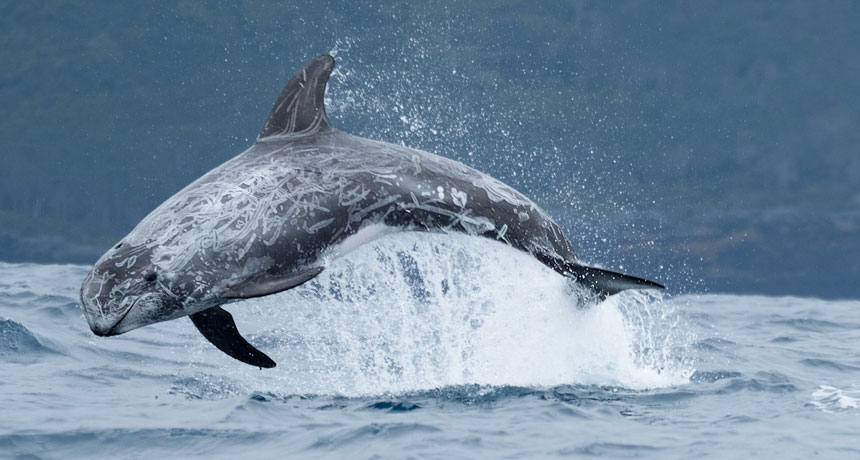
A new computer program has an ear for dolphin chatter.
The algorithm uncovered six previously unknown types of dolphin echolocation clicks in underwater recordings from the Gulf of Mexico, researchers report online December 7 in PLOS Computational Biology. Identifying which species produce the newly discovered click varieties could help scientists better keep tabs on wild dolphin populations and movements.
Dolphin tracking is traditionally done with boats or planes, but that’s expensive, says study coauthor Kaitlin Frasier, an oceanographer at the Scripps Institution of Oceanography in La Jolla, Calif. A cheaper alternative is to sift through seafloor recordings — which pick up the echolocation clicks that dolphins make to navigate, find food and socialize. By comparing different click types to recordings at the surface — where researchers can see which animals are making the noise — scientists can learn what different species sound like, and use those clicks to map the animals’ movements deep underwater.
But even experts have trouble sorting recorded clicks, because the distinguishing features of these signals are so subtle. “When you have analysts manually going through a dataset, then there’s a lot of bias introduced just from the human perception,” says Simone Baumann-Pickering, a biologist at the Scripps Institution of Oceanography not involved in the work. “Person A may see things differently than person B.” So far, scientists have…
The post AI eavesdrops on dolphins and discovers six unknown click types appeared first on FeedBox.